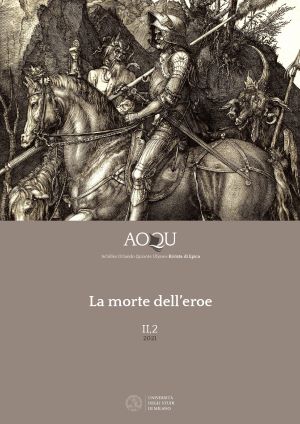Abstract
Triangulating the military practices of the pre-modern world, the ideologies of “shame societies” and the symbolic plexuses of universal heroic poetry, this article revisits the crucial theme of early death – sudden violent red –, a moment of revelatory density through which the elite warrior accomplishes himself and shapes the end of his life. Ubiquitous and pervasive in international epics, the obsession with the ‘beautiful death’ is a legacy of martial cultures founded on a sense of honour and fighting face to face. Dying before his time on the battlefield is the fighter’s way of defeating ordinary mortality by escaping the withering of the flesh once and for all. The glorious and premature passing not only builds the posthumous fame of the champion within the framework of tribal memory, but also fixes his body forever in the splendour of youthful beauty, preventing decay. Seen from this perspective, premature death is one of the performances through which the hero militates against the forces of the pre-formal and undifferentiated chaos. In traditional societies, the brave man is always on the side of order and light: his personal exploits, performed at the point of maximum visibility, outline the singularity of the individual gesture within the anonymous swarm of the amorphous melee; his death – unique and grandiose – preserves the splendour of the virile body from the ravages of time and the shadow of decay, agents of the corruption that consume men and lead them, one day after another, towards the abyss of non-being.

